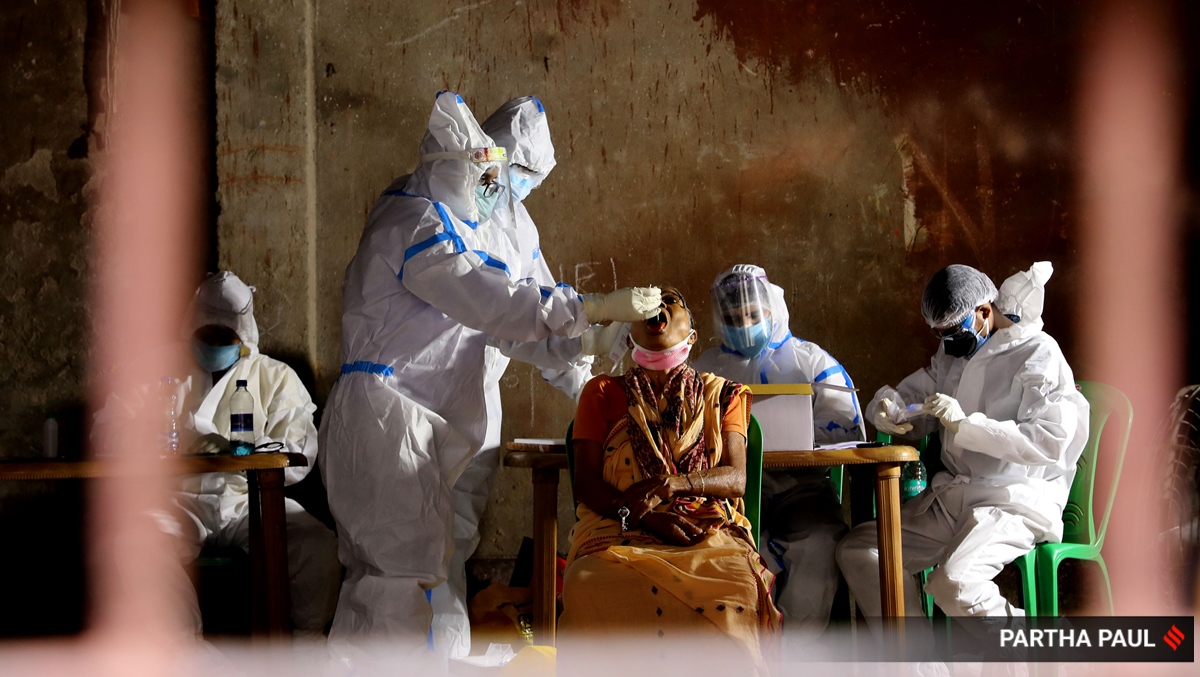 Compounding India’s misery is the inscrutable association between non-communicable diseases (NCDs) and COVID-19. (File)
Compounding India’s misery is the inscrutable association between non-communicable diseases (NCDs) and COVID-19. (File)Written by Ranju Anthony
The novel coronavirus pandemic (SARS-CoV-2) is the most decapitating public health emergency of this century, it has exposed the vulnerabilities of India’s fragile health system. The virus that mainly affects the lower respiratory tract is predisposed to manifest pneumonia in young and old alike leading to severe trauma among the affected. In cases with underlying medical conditions, the recovery that follows is so debilitating that the scarred lungs take months to return to pre-COVID level functioning. The total number of cases have crossed six million. The mortality has seemingly been better controlled compared to most affected countries, but it pales in comparison to India’s neighbourhood, with countries like Bhutan, Nepal, Pakistan, Maldives, and Sri Lanka handling the situation phenomenally better.
Compounding India’s misery is the inscrutable association between non-communicable diseases (NCDs) and COVID-19. The disease is said to have a clinically cataclysmic effect on pre-existing chronic conditions due to NCDs. Unsurprisingly, the population suffering from the four major types of NCDs that include cardiovascular diseases (CVDs), cancers, chronic respiratory diseases and diabetes mellitus are considered to be the most vulnerable to COVID-19 and also happen to share four major modifiable risk factors that include unrestrained consumption of tobacco, alcohol and unhealthy diets apart from leading an essentially sedentary lifestyle.
The disruption in services that were originally focused on NCDs has been catastrophic. Life-saving hospital dependent procedures, including dialysis, prioritisation of chemotherapies and/or radiotherapies, CVD related invasive procedures, and transplant surgeries are all either being postponed or have been intermittently stopped, affecting patients and their attending families alike. Reassignment of health workers originally aligned with NCD services further has seen a cascading effect on home-confined treatments. Needless to add, that these disruptions may have culminated into many COVID-19 cases in the country.
India is anyway amidst an epidemiological as well as a demographic transition that renders a large segment of the population continually vulnerable to communicable diseases including tuberculosis, vector borne diseases, cholera and diarrhoeal diseases apart from environmental and lifestyle determined chronic non-communicable diseases. The co-relation between pandemics like COVID and NCDs-related morbidities and mortalities need to be extrapolated with “actionable intelligence” on ground. The co-morbidities associated between communicable diseases like tuberculosis, HIV/AIDS and now COVID and their linkages with NCDs like cardiovascular diseases and chronic respiratory diseases need to be categorised as prioritised research by the government and academia. This would conform and contribute towards attaining specific objectives penned under the World Health Organisation’s (WHO) globally executable action plan of achieving 25 per cent reduction in premature mortality by the year 2025.
While there have been a few notable successes with respect to vertical national programmes for communicable diseases (that is the National Vector Borne Disease Control Programme and National Tuberculosis Elimination Program, erstwhile known as Revised National Tuberculosis Control Programme), a programme dedicated to NCDs like National Programme for Prevention and Control of Cancer, Diabetes, Cardiovascular Diseases and Strokes (NPCDCS) has been struggling to take off since its inception in the year 2010. In spite of being brought under the aegis of National Health Mission (NHM), the actual plans identified under the National Multi-sectoral Action plan for Prevention and Control of Common NCDs, 2017, are yet to take off. Implementation of “health systems strengthening” is marred with varying levels of access to primary healthcare within the country, which easily gets corroborated with an enormous out-of-pocket expenditure that India’s population spends on managing NCDs, through private clinics or hospitals. Even from a human resources perspective, the primary and district healthcare facilities are severely understaffed with strained diagnostic and therapeutic facilities in the country. Another stinging indictment of this flawed policy comes through a consistently sparsely funded NHM, even though a flagship National insurance scheme like “Ayushman Bharat” is benefitting. Instead of accentuating on newer notions like artificial intelligence in health care, due diligence should be accorded to existing actionable intelligence at state levels that should record and compare “outcome targets” as proposed by the WHO vis-à-vis actionable indicators that indicate actual prevalence of NCDs and their associated risk factors (consumption of tobacco and alcohol, obesity, and salt intake) in the target population.
COVID has exposed these structural flaws with a reminder to health policy practitioners that the “silo-centric” approach to containment of either communicable or non-communicable diseases may simply not work for a large country like ours. SARS-CoV-2 isn’t the only novel human “coronavirus” that could threaten our health system in the future again; repeated human environmental interactions would ensure many such transgresses in future. The way forward should include integration of complementary and alternative systems of medicine like AYUSH or rather mainstreaming of AYUSH into the existing health system and novel public health imagination led sustainable systems for surveillance of NCD related data, lacking which, an effective monitoring and evaluation system of national programmes focused on NCDs is simply not viable.
(The writer is a public health practitioner)
📣 The Indian Express is now on Telegram. Click here to join our channel (@indianexpress) and stay updated with the latest headlines
For all the latest Opinion News, download Indian Express App.